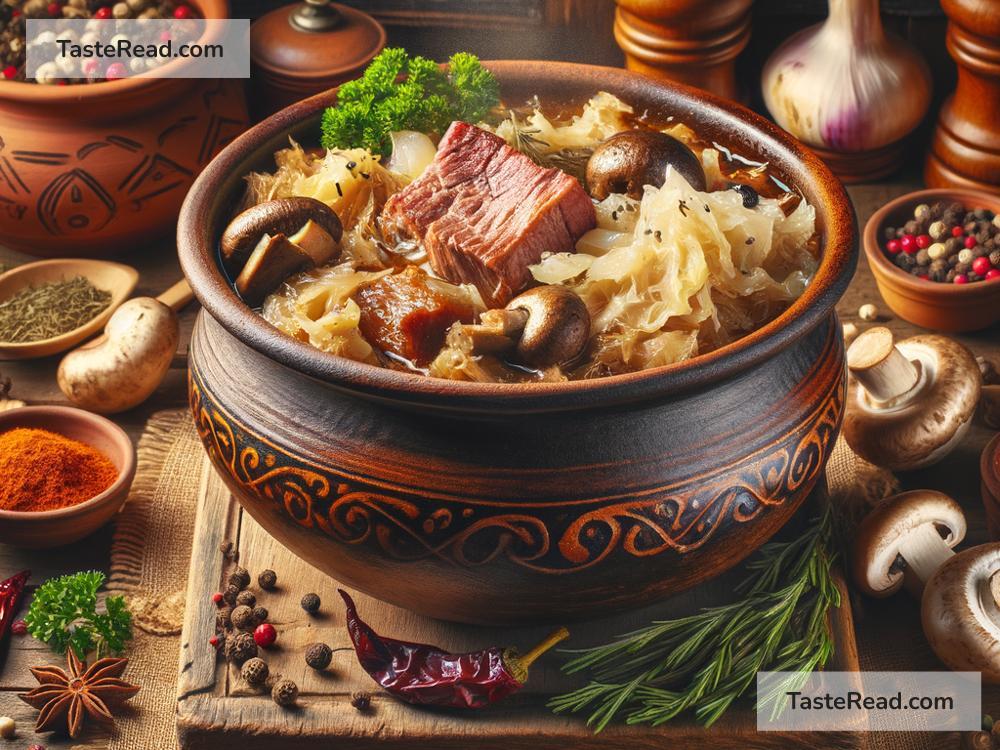Title: Traditional Polish Bigos: A Generational Treasure in Every Bite
When it comes to traditional Polish cuisine, few dishes capture the heart and soul of the culture more than bigos, often referred to as “Hunter’s Stew.” For centuries, this hearty, flavorful dish has been a symbol of family, warmth, and tradition, passed down from grandparents to children across generations. Bigos is not just food—it’s a story, a celebration, and a way to keep history alive.
What Is Bigos?
Bigos is a rich and flavorful stew made from sauerkraut, fresh cabbage, assorted meats, and aromatic spices. It is often cooked slowly over several hours—or even days—to fully develop its deep and complex flavors. Traditionally, bigos was designed to be a dish that used up scraps of meat, preserved cabbage, and other leftovers, but over time, it became a beloved culinary masterpiece.
This stew is closely tied to Poland’s history and lifestyle. Sauerkraut, one of the main ingredients, was a staple ingredient in Polish kitchens because it is inexpensive and can be preserved for long periods during harsh winters. Similarly, the use of meat (often pork, beef, venison, or sausages) reflects Poland’s hunting traditions and rural roots.
A Dish Passed Down Generations
Ask any Polish person about bigos, and they’ll likely smile and tell you about their grandmother’s version of this iconic dish. While the basic ingredients are consistent, no two families make bigos exactly the same way. Some recipes use wine, some add mushrooms, and others include prunes for a subtle sweetness. What’s common in every version, though, is the idea of preparing bigos with love and patience.
In many Polish homes, bigos is cooked in large batches because it tastes even better the next day. Families who make a pot of bigos know they’re preparing not just a meal, but a shared experience. It’s served during festive occasions like Christmas, Easter, birthdays, and wedding celebrations, but it’s also a comforting meal on cold winter evenings. For many families, cooking bigos is a ritual—one that brings everyone around the kitchen table, sharing stories as the stew slowly simmers on the stove.
The Core Ingredients
While bigos recipes vary from household to household, there are a few essential ingredients that every version contains:
-
Sauerkraut and Cabbage: Sauerkraut brings the tangy flavor that makes bigos recognizable. Fresh cabbage is often mixed in for balance.
-
Meat: Bigos traditionally uses a combination of meats, often pork, sausage, beef, or sometimes game meats like venison. The meat is usually cut into chunks and mixed with smoked or cured varieties for an added depth of flavor.
-
Onions and Garlic: These bring a savory sweetness to the dish.
-
Tomatoes: Tomato paste or diced tomatoes are used to create the stew’s rich, flavorful base.
-
Seasonings: Bay leaves, black pepper, marjoram, and allspice add traditional Polish flavors to the dish.
-
Extras: Mushrooms, prunes, and red wine are common additions, depending on the family’s recipe.
How Bigos Is Made
Making bigos is a labor of love. It’s not difficult, but it does take time. The longer the stew cooks, the better it tastes—allowing the flavors to blend and deepen. Here’s how a traditional bigos might be prepared:
-
Prepare the Sauerkraut and Cabbage: Rinse the sauerkraut to remove excess saltiness, if needed, and shred it finely. Chop fresh cabbage into thin slices if used.
-
Cook the Meat: Brown the meat and sausage in a large, heavy pot or skillet to seal in the flavors.
-
Sauté Vegetables: Sauté onions, garlic, and mushrooms until golden and fragrant.
-
Combine Ingredients: Add the sauerkraut, cabbage, meat, and vegetables to a large stew pot. Stir in tomato paste and seasonings.
-
Simmer and Wait: Pour in some water (or broth) and let the bigos simmer over low heat, stirring occasionally. Some recipes call for adding wine or chopped prunes for enhanced flavor.
-
Reheat for Best Taste: After cooking, bigos is often refrigerated overnight and reheated the next day. This resting time allows the flavors to meld together beautifully.
Bigos and Polish Hospitality
In Polish culture, bigos is more than a dish—it’s a gesture of hospitality. Offering guests a steaming bowl of bigos is like saying, “You are home here.” It’s warm, filling, and meant to be shared. It captures the essence of Polish family meals, where the food brings everyone together.
Serving bigos at family gatherings and celebrations is a way of honoring roots and traditions. The process of making it is often communal, allowing children to learn from their elders, and families to bond over stirring, seasoning, and tasting. Even today, in a fast-paced world, these moments of cooking together keep the spirit of bigos alive.
Bringing Bigos Into Your Home
Though bigos has ancient origins, it’s easy to bring this traditional dish into modern kitchens. You don’t need fancy equipment or exotic ingredients—just time, patience, and a love for good food. It’s the perfect dish to make for large gatherings or meal prep because it keeps well and tastes better with each passing day.
Whether you follow a recipe passed down in your family or experiment with new flavors, cooking bigos connects you to centuries of Polish culinary history. With every bite, you’ll taste the tradition, the warmth, and the care that has gone into perfecting this dish.
So, roll up your sleeves, gather your ingredients, and celebrate the Polish tradition of bigos in your own home. Who knows? Perhaps your own version will one day be the recipe future generations treasure and pass down.
Enjoy the hearty, flavorful hug that is Polish bigos—a stew with history in every spoonful.


